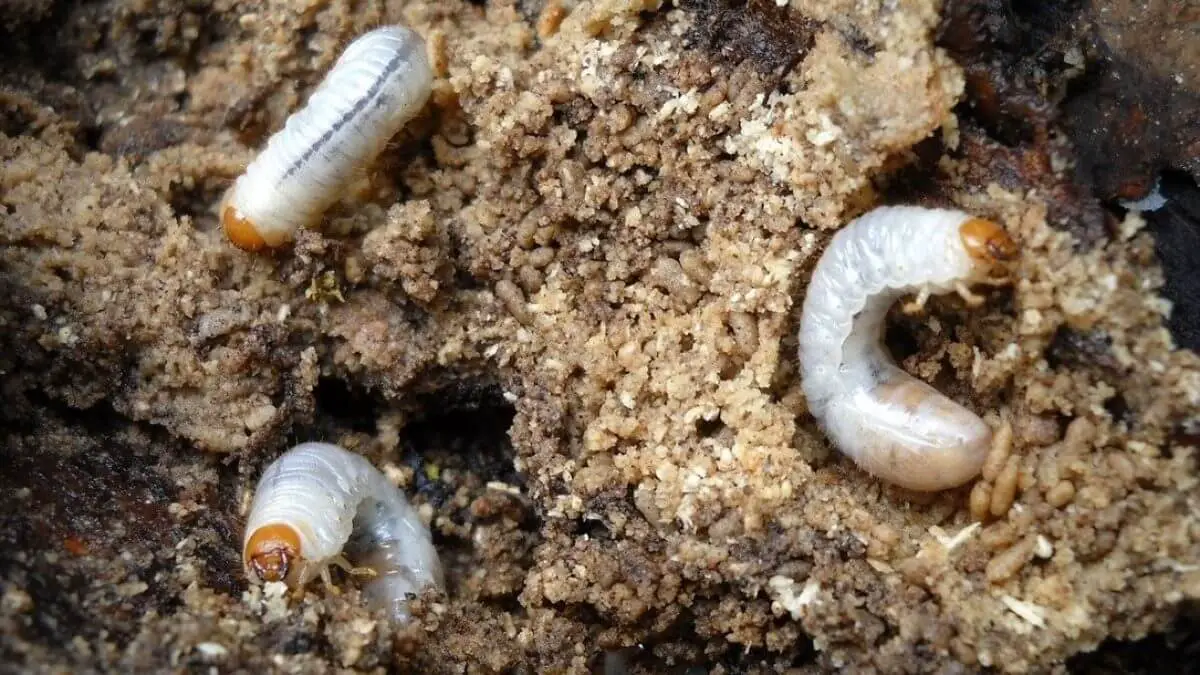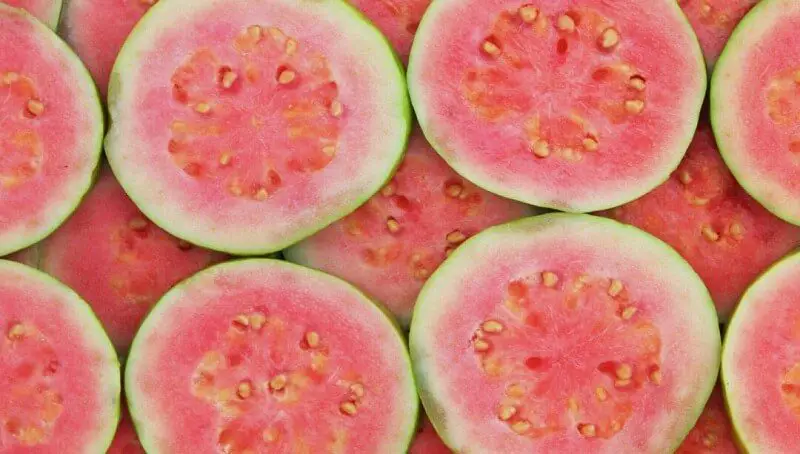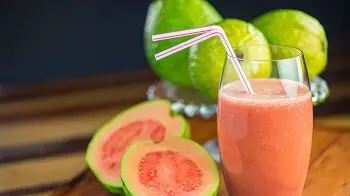
Can Dogs Drink Alkaline Water? Any Benefits or Side Effects?
March 25, 2022
Can Bearded Dragons Eat Grubs? Any Risks or Benefits?
March 26, 2022
Guavas were first discovered in Central America and are a type of tropical fruit. Their skin is a pale yellow in color and their inside is white, fleshy, and contains a lot of seeds that can be eaten.
Guavas are known to offer humans all kinds of health benefits because they have considerable amounts of vitamin C, potassium, fiber, and antioxidants. But will guanas be just as good for cats as they are for humans?
Can cats eat guava?
The short answer is Yes, cats can eat guanas safely, as long as they do so with moderation. One of the best ingredients for cats that can be found in guanas is Vitamin C. Along with high amounts of vitamins, guavas also have something called oxalate, which can irritate your cat if ingested in too high amounts.
So, the main reason why you should refrain from giving your feline friend high amounts of guana is to prevent the formation of bladder stones and some digestion issues caused by this substance.
You might also like my articles on whether cats can eat sausage and salmon skin.
Another important aspect to consider is that although the seeds are edible and wonțt cause any issues to humans, they can be a choking hazard for cats, so they should be removed before you feed your pet with the guana fruit.
Additionally, guana can also cause constipation due to its pectin content. This means that you should give your gat guanas only from time to time, to prevent any bowel blockages.
Nutritional Value of Guava for Cats
A lot of other nutrients can be found in guana along with vitamin C, and among these are calcium, potassium, vitamin A, and iron.
Iron is known to improve the hemoglobin levels in your cat’s blood. It is also of great help in regulating the functions of a cat’s body, due to its specific enzymes.
Vitamin A, another vitamin found in this fruit, is very important in promoting the health of a cat’s skin but also helps develop its night vision. Vitamin A’s ability to boost the immune system of both people and their pets is well-known due to its antioxidant properties. It also works in protecting the pet’s body from some serious health conditions and even cancer.
Calcium on the other hand will protect the teeth, gums, and bones of the feline and potassium will improve the functioning of its nerves and muscles.
One of the reasons that should make Guava an occasional treat instead of a regular part of your pet’s diet is its high content of sugar. You will find one gram of protein, 5 grams of sugar, 8 grams of carbohydrates, 1 milligram of sodium, and one gram of fat in just one serving of guava.
How Many Guavas Are Enough For My Cat?
You should only offer your cat a maximum of two slices of guanas and only as occasional treats, not regular parts of the diet. This is mostly because of this fruit’s high content of sugar. If given in moderation, it can actually help to boost the general health of your feline instead of hurting it.
When I say that cats can have guanas, it doesn’t mean that your particular pet will even like the fruit. All cats are different and will like to eat different things, just like how most mammals have preferences. This means that, if you notice that your cat isn’t a fan of guanas, you should never try to force-feed it. She may like other fruits instead, or, on rare occasions, she might not like fruits at all.
One of the most important tasks of a pet owner is to figure out what their pet likes to eat and to create the best diet for both the pet’s health and its taste. If your cat likes guana, then give it this fruit only in moderation, a maximum of three times per week.
Why Are Guavas Bar But Also Good for Cats?
 One of the main factors that make guavas very beneficial to cats is their fiber levels which will help with the pet’s bowel movements. This means that this fruit can do wonders if eaten in small amounts, especially if your cat will have issues with constipation.
One of the main factors that make guavas very beneficial to cats is their fiber levels which will help with the pet’s bowel movements. This means that this fruit can do wonders if eaten in small amounts, especially if your cat will have issues with constipation.
These tropical fruits are also packed with vitamin C, helping both humans and animals in general fight immunity deficiencies. Addin guanas from time to time in a cat’s diet will also help it fight any viruses and bacteria, due to its anti-microbial properties.
Only small amounts of Vitamin C will actually be required and used by the pet’s body and the rest will simply be flushed during the normal digestive functions. This is why you shouldn’t overfeed your cat with guana to boost its vitamin C intake. Two to three times a week will usually be enough.
One of the disadvantages of guanas is their high amounts of oxalates. The good part is that most oxalates are found in the seeds, so removing most of the seeds before feeding your cat with guana will reduce the negative effects of this substance on the pet’s body.
Another disadvantage of this fruit is that it can damage your pet’s urinary tract if you make it a regular part of this diet. You can take advantage of all of this fruit’s pros without being hit by the cons by offering this fruit to your cat only from time to time.
How to Feed Your Cat With Guava
- The first thing, and it is something you should do with most fruits, is to wash it to remove any dirt or dust.
- The next step is to chop it into thin slices to be able to remove the seeds easier.
- Keep in mind that only one or two slices will actually be the treat for the cat. The rest can be stored for later use or eaten by yourself.
- You can then mash the guana and place it in the cat’s bowl, mix it with other types of food, or give it as it is, as a treat. You can even blend the guana flesh to make juice that your cat can drink.
- The skin isn’t something that all cats like, so if you see your cat avoiding the skin, remove it and just offer the flesh as a treat.
- Regardless of how you feed the guana to your cat, it already has plenty of natural sugar, so you shouldn’t add any more.
- Packed and canned guava juice will usually be made using chemicals and preservatives, which makes them unfit for pets, and this includes cats. Homemade guava juice from fresh fruits is always the best way to feed it to your cat.
What fruits are poisonous to cats?
Grapes and raisins are the worst and can lead to kidney damage. Cherries are also toxic, and citrus fruits like persimmons, limes, lemons, and grapefruit can upset the animal’s stomach.
What fruits can cats eat?
Cats can eat guavas, of course, but also other fruits that come packed with vitamin C. You can also feed your cat with strawberries, blueberries, watermelon without the seeds, bananas, or a combination of these fruits.
Final Words
You can feed your cat with guavas, but you should do this in moderation. You should also try to remove the seeds each time before adding this fruit to your cat’s diet, to make sure that it won’t choke.
